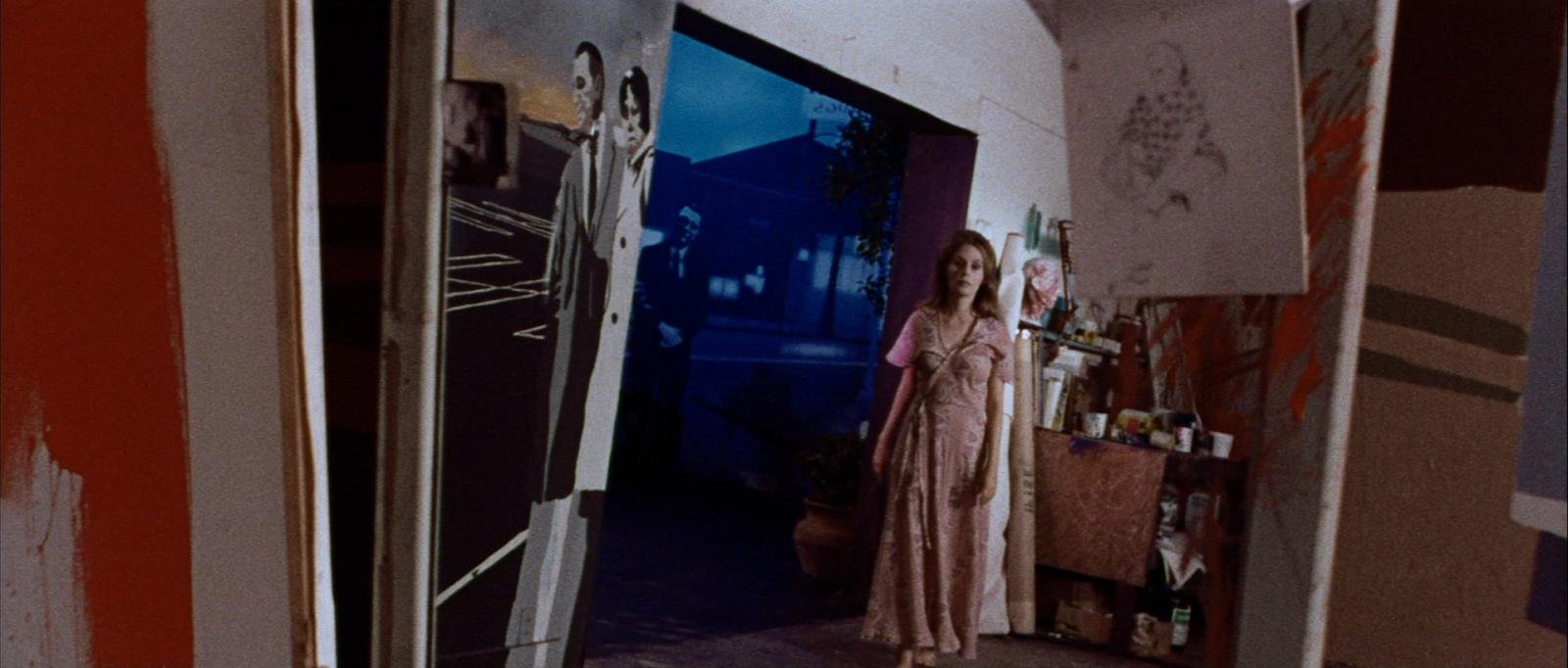All Hail The Messiah of Evil
The year was 1974 when Messiah of Evil blew into theaters on the howl of some cold winter wind, heralding the start of a decade which would permanently alter the shape of cinematic terror. The Texas Chain Saw Massacre spilt blood earlier that year, Dawn of the Dead arrived to terrify in ‘78, and Halloween stalked onto screens a mere month after Romero’s opus. But while all these titles sit rightly on their thrones of terror, Messiah of Evil went largely unnoticed and unregarded… until recently, when it seems mainstream culture finally shone light on this undersung classic. Say a blasphemous prayer, raise your gaze to the night sky, and rejoice. With the Fantastic Fest premiere of AGFA’s new restoration, one of American horror’s most stunning and unsettling works finally shines in all its gloomy glory.
The place is Point Dune, a small town on the long dark nowhere coast of California. The protagonist is Arletty Long, a woman determined to find her missing father. The problem? No one who lives in Point Dune seems willing to help, not to mention the unnatural howls which sound at night or the local tales of blood moons and twisted beasts. The deeper Arletty digs the stranger things become, and soon both she and some new companions realize that once you've entered Point Dune, there may not be an escape route—unless, of course, you're meant to send a message to the outside world. A narrative told after the fact by Arletty as she languishes in a psychiatric ward, Messiah of Evil resonates most strongly with the literary traditions of Poe and Lovecraft, particularly their focus on characters who go classically “mad” after confrontations with unknowable horrors.
Emphasis on “unknowable.” Like most great horror films, one of Messiah’s biggest strengths is knowing what to show and when; withholding visual information in a way which leaves the brain scrambling for meaning. Few of Point Dune’s terrors are ever actually seen, only implied with sound effects or described through portentous narration and desolate diary entries. What is seen most often are spaces: mundane buildings like houses and gas stations but always solitary and shrouded in dark; looming out of night as if nested in black velvet. These disassociated structures render it impossible to ever get a sense of Point Dune’s geography, and as such the town never feels quite like a real space. It's a technique applied in miniature within the artist’s home where Arletty resides—there are few establishing shots, and the camera never reveals more than a single room at a time. Compound this with the space-warping murals on nearly every wall and you've got a veritable labyrinth of doom and gloom.
“Doom” and “gloom” are two more operative words when describing Messiah of Evil; a film so steeped in terminal zero-sum dread you know there's no hope from the moment it begins. The early Garson-esque synthesizer music warbles between mournful at best and murderous at worst, the characters could all benefit from Lexapro prescriptions, and the spare death scenes are so grim they make you wonder if any other horror film has ever actually done a kill properly. These deaths all occur in the aforementioned small-town spaces: blood spilt in the aisles of grocery stores and movie theaters; splattering across fluorescent-lit floors in a visceral contrast to the darkness outside. It's no mistake that so much of Messiah’s horror happens in and around consumer spaces; even less so that focus lingers on the eating of flesh and cult-induced mindlessness. Though Messiah of Evil is not explicitly a zombie film—it trades more in a less problematic approach to Lovecraftian ideas of small towns and Elder Gods—you'd be hard-pressed not to interpret the narrative through a similar framework as one of Romero’s offerings, particularly Night of the Living Dead.
But don't let these comparisons—or even my writing—tell you how best to enjoy Messiah of Evil. I'll stake my claim that it's a totally unique experience which eclipses the sum of its influences to transcend like a bloody moon; a visual and emotional powerhouse which has to be felt to be understood. No other horror film operates on such rancid, specific vibes; often playing like the spooky yet restrained Silent Hill adaptation Dario Argento never got to make. It’s a blunt, affecting story; delivering its grim payload like a period dotted so aggressively it rips through the other side of the page. Everything feels a little wrong in Messiah of Evil, and whenever you think you've caught up the movie finds a way to pull the rug yet again. Like all the greats, there's an inspiring use of low-budget horror techniques and the sense that the creative minds behind Messiah truly believed in what they were putting on the screen. Never has the phrase “every frame a painting” been truer—every frame a shadowy, bump-in-the-night, existential scream of a painting.



Morgan Hyde is a film programmer and completely normal woman operating out of Austin, Texas. Find her on all your favorite social media @cursegoat.